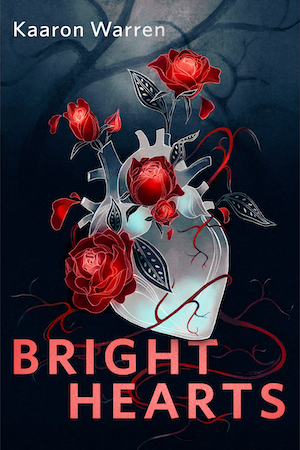In this bi-weekly series reviewing classic science fiction and fantasy books, Alan Brown looks at the front lines and frontiers of the field; books about soldiers and spacers, scientists and engineers, explorers and adventurers. Stories full of what Shakespeare used to refer to as “alarums and excursions”: battles, chases, clashes, and the stuff of excitement.
Beginning in the middle of the 20th century, Ace Books began publishing genre fiction in a format called the Ace Double, which printed two short novels back-to-back. In many cases, that gave you twice as much story to enjoy. And if—like the book I’m looking at today—one of those two novels was a clunker, you could feel like your money (a whole 95 cents in those days) wasn’t all wasted.
This book contains two stories originally published in the 1940s. The first, The Sun Destroyers, is a “fix-up,” a series of related short stories merged into a single narrative. It has a fantastic premise, told from the viewpoint of gigantic energy beings that feed on stars and planets, and was written by Ross Rocklynne, a prolific author who, while not in the first rank of science fiction authors of that time, was frequently published in the most popular magazines of the day. The second, A Yank at Valhalla, is an Earth-bound book that offers a (somewhat) scientifically plausible explanation for the myth of the Norse gods. It was written by Edmond Hamilton, a master of space operas and adventure stories. While the covers are not credited, I believe both were done by Jack Gaughan.
About the Authors
Ross Rocklynne was the pen name of Ross Louis Rocklin (1913-1988), a popular author in the early days of science fiction, who wrote few tales of novel length, but nearly a hundred shorter works. He was also an early member of science fiction fandom, crediting E.E. “Doc” Smith’s The Skylark of Space for inspiring his love of the genre, and attended the first World Science Fiction Convention in 1939. He sold his first story to Astounding in 1935, and was frequently published during John Campbell’s tenure at the magazine. During his career he was also published in magazines like Astonishing, Amazing, Planet Stories, and Galaxy. Rocklynne retired from writing due to health issues in the mid-1950s, although he made a brief return in the late 1960s and early 1970s, most notably with a story, “Ching Witch!”, which appeared in Harlan Ellison’s acclaimed Again, Dangerous Visions anthology. You can read some of his work for free, including a segment of The Sun Destroyers, at Project Gutenberg.
Edmond Hamilton (1904-1977) was a science fiction author before the term “science fiction” had become widespread. He was a prolific pulp writer whose specialty was space opera. He created Captain Future (kind of a Doc Savage character in space), and also wrote comic books for DC. I’ve touched on Hamilton’s work three times in this column. The first was when I compared his first Captain Future book with a reboot by Allen Steele (find it here). The second was when I reviewed a collection of his wife Leigh Brackett’s work that he edited. And the third was when I reviewed his classic space opera novel The Star Kings. You can find more biographical information in those reviews. Like many authors whose careers started in the early 20th century, you can find a number of Hamilton’s stories at Project Gutenberg.
Ace Doubles
As paperback books became popular, publishers were hungry for content to fill them. The “novels” published in the pulp magazines at the time were more of what we now call a novelette or novella, too short to fill a paperback. Ace Books came up with an interesting approach, printing two shorter works back-to-back, each with its own cover. Newsstands and stores could display either cover simply by flipping the book over.
I’ve reviewed stories packaged as an Ace Double once before. In that case, it was two related stories about the same character, Leigh Brackett’s barbarian hero Eric John Stark. But as often as not, the doubles presented the reader with two different tales from two different authors, and those stories could be strikingly different, as are the stories I am reviewing today. This book was published in 1973, just before Ace abandoned the double-cover format for their books. The doubles format has been revived from time to time, but never achieved the success of the original run of books. The idea of collecting shorter works into collections or anthologies, however, remains a vital part of the science fiction genre.
The Sun Destroyers
From the very start, this book has an audacious premise, taking a cosmological approach to storytelling that is quite distinctive (the online Encyclopedia of Science Fiction, while not mentioning The Sun Destroyers, touches on these topics in an article on Cosmology). It is written entirely from the viewpoint of massive energy beings, and Rocklynne gives himself the unenviable task of making these creatures relatable characters despite their lack of human characteristics. Their lives span millions of years, and one of their primary occupations is to manipulate stars and planets as a game, seeing how large they can build systems before they become unstable. Sometimes they imbue these planets with life, although they are just as likely to snuff that life out when they lose interest. They live in an interesting environment where there are at least forty-nine bands of existence, each with different natural laws. The creatures are gendered into male and female, with the purple creatures being male and the green creatures being female; a rather unimaginative approach, under the circumstances.
The reader is introduced to Darkness, a young purple/male creature who quickly becomes dissatisfied with the games his contemporaries play. He consults with an ancient, sleepy, and unhappy being called the Oldster, who tells him that travel between galaxies is possible. Darkness gathers huge amounts of energy by destroying whole stars, and sets out through the darkness between galaxies. When he makes the crossing he meets a green creature, and is inexorably drawn to her. They mate, and he discovers a horrible truth about his people. They reproduce when the female draws the life force from the male, who soon dies. The females, on the other hand, can reproduce up to four times before losing their life force. The females are the only ones who know this secret—a rather unpleasant thing to think about. And it is difficult to comprehend how, in their millions of years of existence, no males noticed that when a couple left to mate, only a female and a child survived. So poor Darkness crosses the vastness of space only to die after spawning, like some sort of cosmic salmon.
The reader then meets the daughter of Darkness, Sun Destroyer, a sadistic entity who takes pleasure in torturing other energy creatures, and disrupting their games. As she matures, she tries to fit in better with her fellow creatures, but because of her past behavior, they shun her. Like her father, she is restless and unhappy, but instead of seeking to travel between galaxies, she becomes obsessed with reaching the previously unattainable forty-ninth band. She mates and produces a young creature she names Vanguard, but leaves him to pursue her ambitions. After consulting with the Oldster, she finally attains her goal, but is unable to return to the lower bands of reality.
Young Vanguard awakens to life without any knowledge of his mother, or even his name. He has mysterious flecks of yellow within his purple core, and knows nothing about the cosmos. He gets the name Yellow Light from a female who takes him under her wing. The other energy creatures shun him because he is big and clumsy, damaged by being left alone without guidance during his youth. He makes his way back to the galaxy where the Oldster resides, and Oldster advises him to seek out the female Star Glory. They mate, and Vanguard dies angrily, his life force consumed in the process.
We then meet another male creature called Devil Star, who discovers the secret of their mating process, and refuses to cooperate. But we soon find that this is not the next generation of the energy creature family we have been following—instead, we are getting the origin story of the Oldster. And then we find that the children of Vanguard/Yellow Light are the next generation of energy creatures, evolved past the childishness of their predecessors, and the Oldster dies knowing that he has helped his species evolve into something better.
For me, this was a long and tedious tale. It was difficult to empathize with the energy creatures. Each generation of the creatures was as unhappy and unfulfilled as the previous one, and their deaths felt pointless until the very end of the story. I found I needed something a bit more grounded in human existence, and human emotions. Fortunately, because of the nature of an Ace Double, I was able to flip the book over and find what I was looking for.
A Yank at Valhalla
A research icebreaker near the North Pole is dredging for artifacts, and brings up a gold cylinder engraved with a warning in old Norse about Ragnarok. Scientist Keith Masters is intrigued, to the point where he puts the cylinder on a cord and wears it around his neck. He has been reading about Norse myth, and this find only reinforces his curiosity. The expedition is sending a surface team to the Pole, and Keith takes off in his rocket-powered airplane to scout possible routes. He is buffetted by a strange storm, and when the skies clear, finds himself over an uncharted land mass. The winds are still strong, so he brings his craft down on a rocky beach bathed in a greenish glow of radiation, only to see medieval-looking castles on an island connected to his landing site by a rainbow-striped bridge. Could this be the mythical city of Asgard?
Science fiction often works ancient myths into stories. Sometimes it is under the surface, with themes and tropes of myth worked into the narrative, but at other times the characters explicitly interact with what seem to be characters from myth and legend (you can read a good article on the topic here). I grew up reading Marvel comics about Thor, and to this day, the Stan Lee/Jack Kirby portrayal of Norse mythology is more vivid in my head than the actual myths themselves. Moreover, in one of my favorite books, The Incompleat Enchanter, by L. Sprague de Camp and Fletcher Pratt (reviewed here), the hero Harold Shea uses a scientific device to visit the world of Norse myth.
Keith is captured by a woman who identifies herself as Freya, and thinks he is an enemy from Jotunheim. But then the two of them are set upon by real Jotun warriors, and Keith fights them off until a band of Asgardian warriors, led by Thor himself, rescues the two. Thus, instead of entering Asgard as a prisoner, Keith enters as an ally. At dinner, he meets Odin, who gives him a history of the Aesir’s origin. It turns out life on Earth began in radioactive caves under the surface, in the land of Muspelheim. Life spread out to the surface of the planet, but because the surface was not as radioactive as the underworld, the surface dwellers did not evolve as quickly as the Asgardians, who developed an advanced society, and harnessed the power of radioactivity (I should note that radioactivity in this story does not behave anything like it does in the real world).
A selfish Asgardian scientist, experimenting with the source of the radioactity that powered their civilization, released radioactivity into their underground world, rendering it uninhabitable and driving them to the surface. They settled on the Arctic islands of Midgard and Asgard that were still bathed in radioactity, and surrounded with clouds that shrouded them from the rest of the world (although the few travelers that left Asgard during ancient times spread tales that became Norse mythology). The radioactivity gave the Asgardians incredibly long lives, but decreased their fertility, and the Freya who met Keith is one of the very few young Asgardians. The evil scientist was Loki, and for his crimes he was put into suspended animation with his scientifically-created pets, the gigantic wolf Fenris, and the enormous Midgard serpent.
This history is delivered in a giant gout of exposition which nearly brings the narrative to a halt, but the action soon picks up again. Keith, or “Jarl Keith” as the Asgardians call him, falls in love with Freya, and she with him. He reveals his gold cylinder to the Asgardians, and it turns out to be the key to Loki’s prison. The key is turned over to Freya, as her family are the traditional holders of the key, and shortly thereafter, she is seized by Jotun warriors. So Jarl Keith and her kinsman Frey set out to save her. There is a thrilling sea chase, and a trip through the tunnels of the gnomish Alfings. Eventually everyone is captured, and Loki is set free. After Loki reveals his plans to lead the Jotuns in an attack on Asgard, and shows Jarl Keith a weather-controlling device, our heroes escape, and flee back to Asgard.
There is an exciting descent into the depths of Muspelheim to collect fuel for a gadget to counteract Loki’s weather device, and then a thrilling final battle for control of Asgard and Midgard. Freya, who had been disappointing me by clinging to Jarl Keith for protection for far too long, finally dons her warrior garb to fight alongside him in the final battle—a stirring clash full of heroism, triumph, and reversals of fortune. Can the young lovers stave off the destruction of Ragnarok, or if it comes, manage to survive?
I’ll leave the rest of the plot for readers to discover, and recommend A Yank at Valhalla to anyone who enjoys a good, pulpy adventure story.
Final Thoughts
This book gave me one miss, but also one delightful hit. While I admired the ambition and creativity Ross Rocklynne brought to The Sun Destroyers, the end result left me cold. On the other hand, Edmond Hamilton’s A Yank at Valhalla was pulpy fun from beginning to end; it’s the kind of adventure story I loved as a youngster, and still love today.
Now, I’m interested to hear from anyone who is familiar with either of these tales. And if they are new to you, I’d like to hear what other pulpy old tales you consider as favorites.










